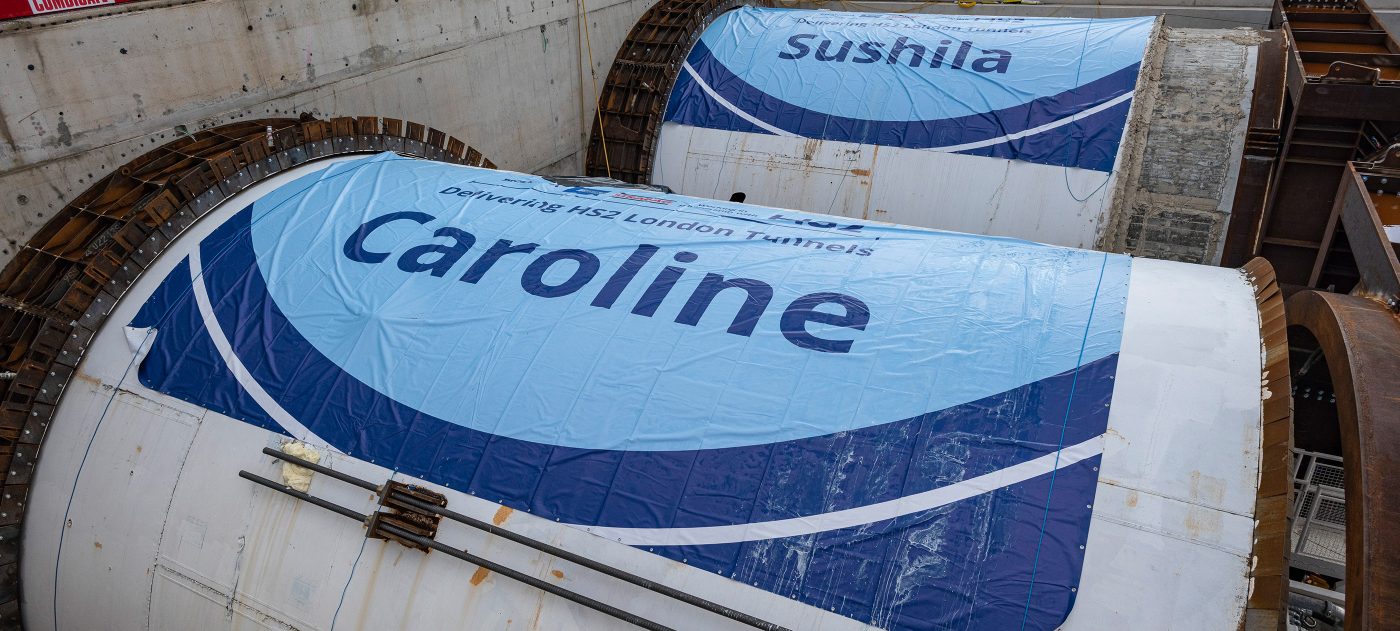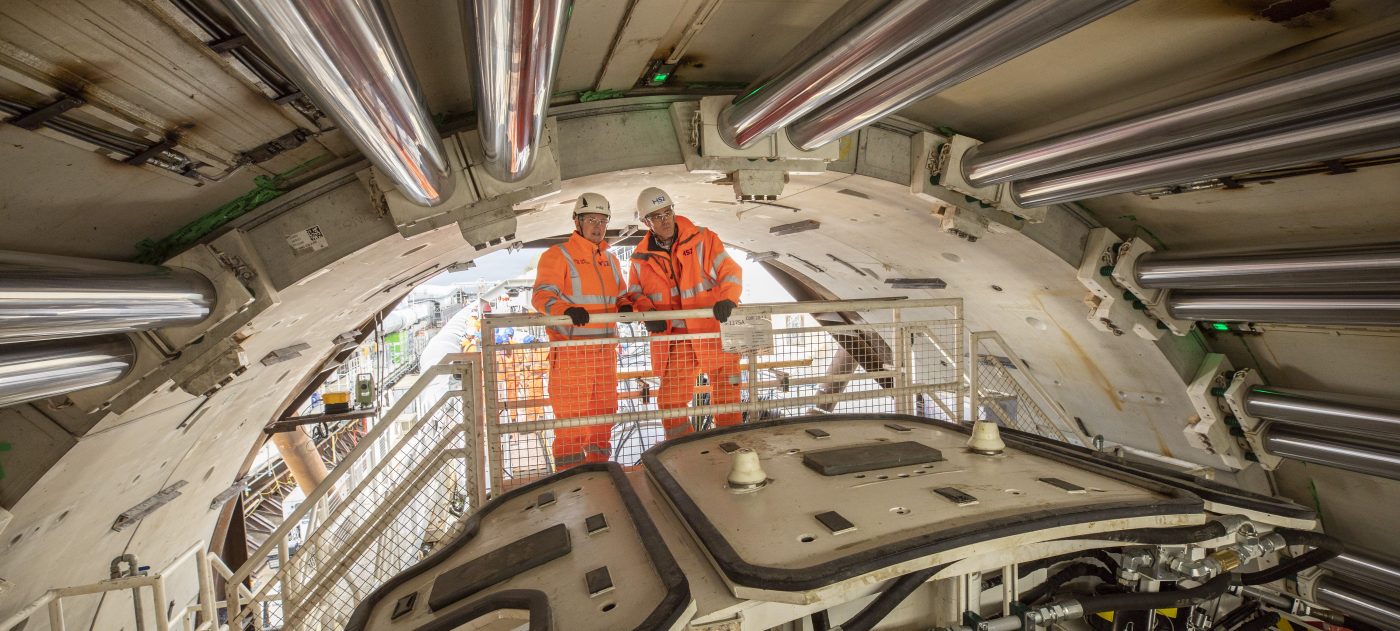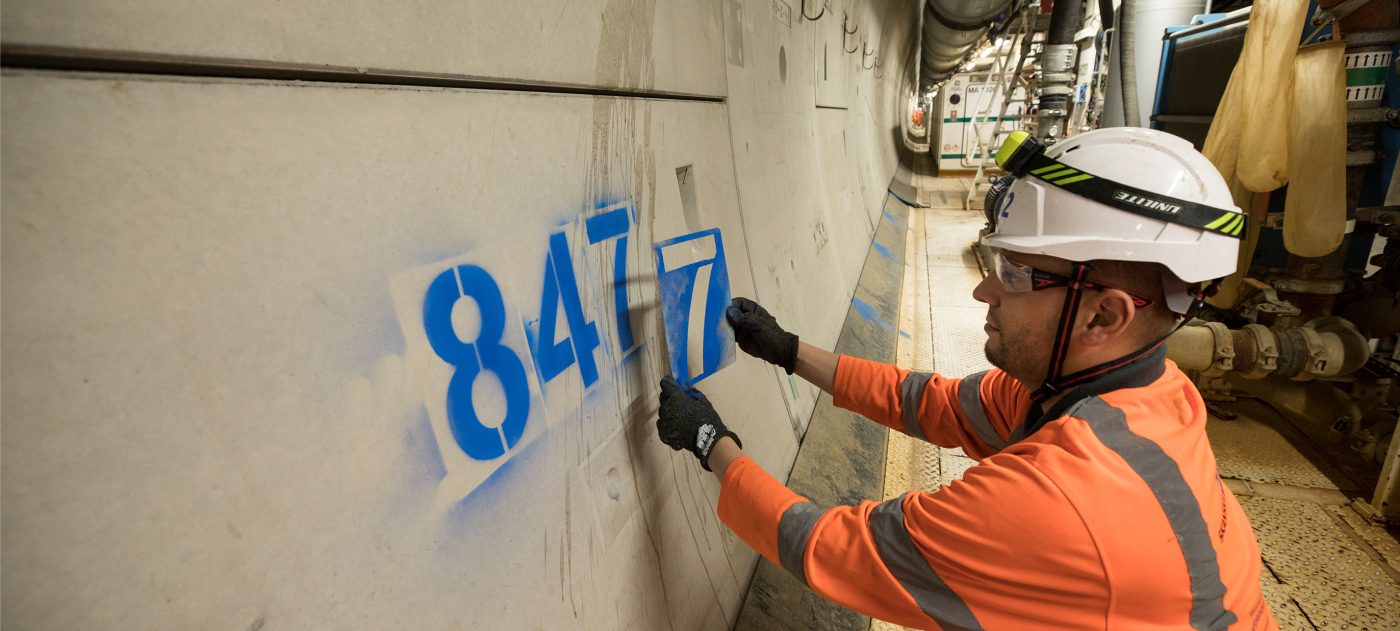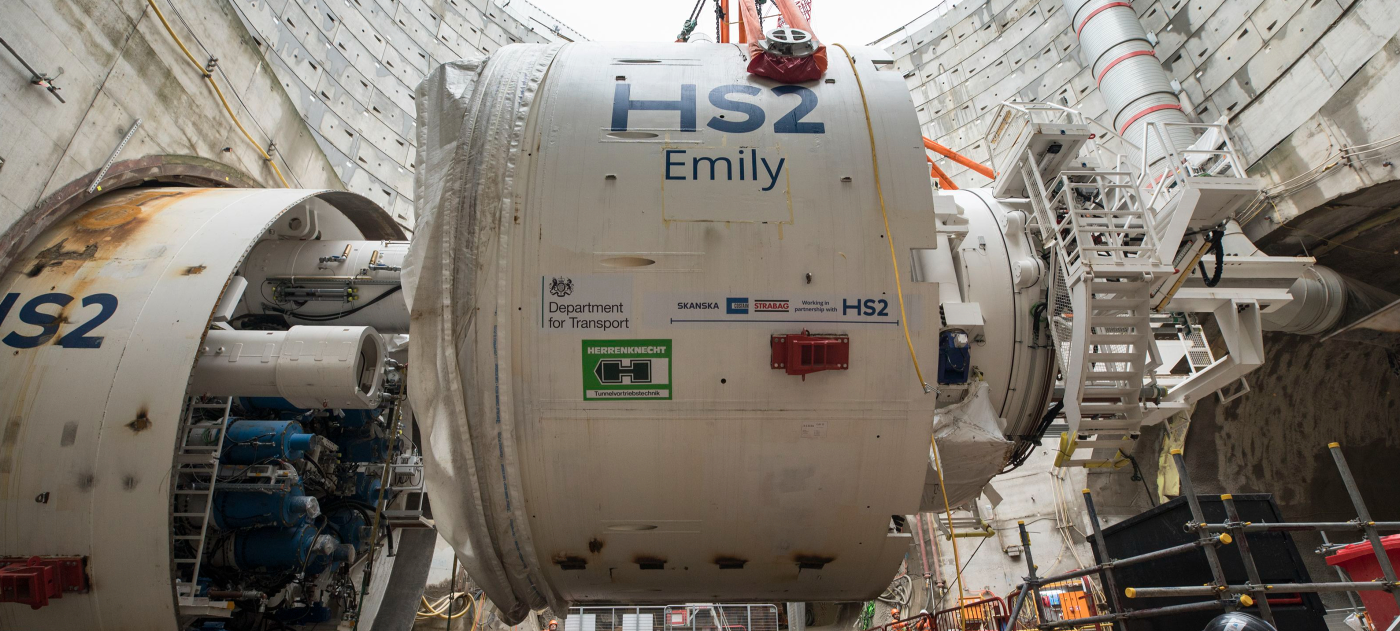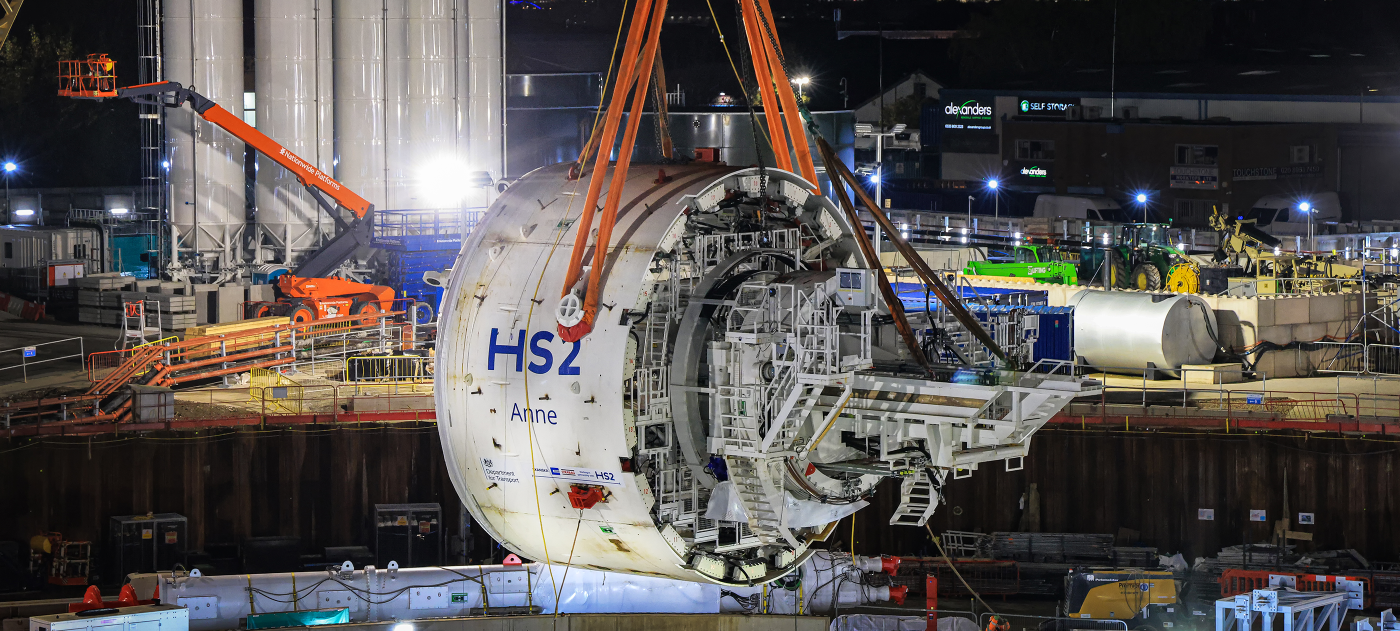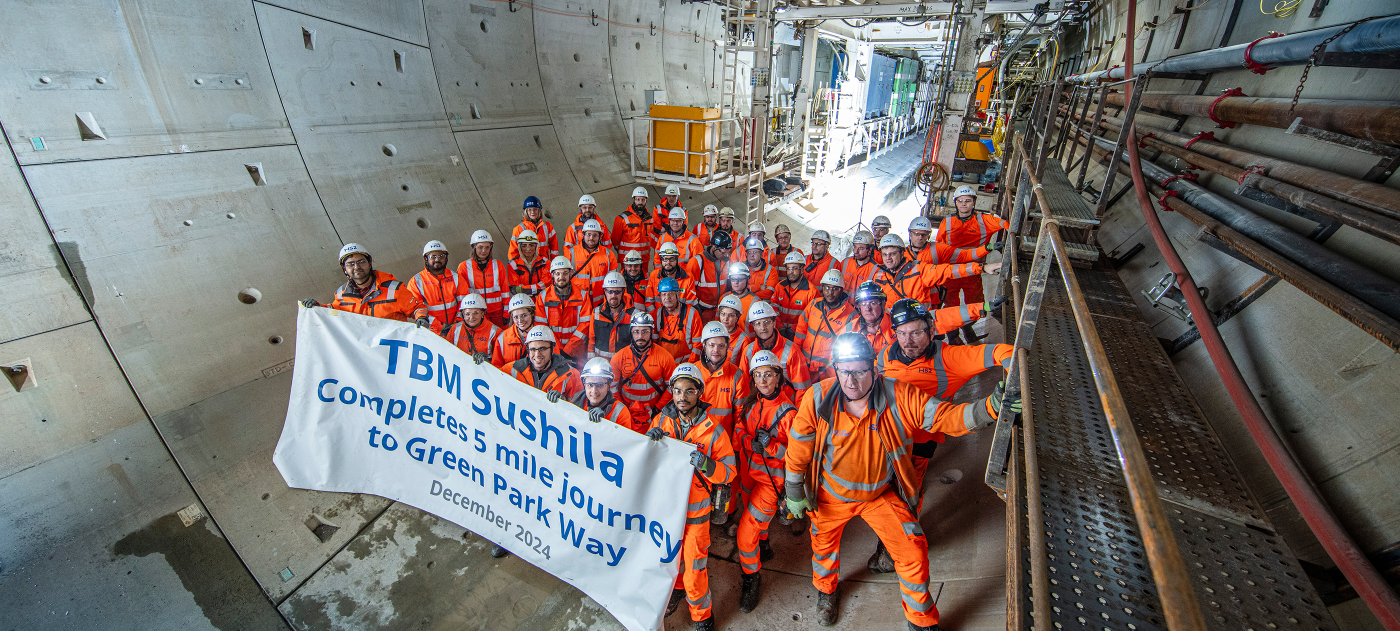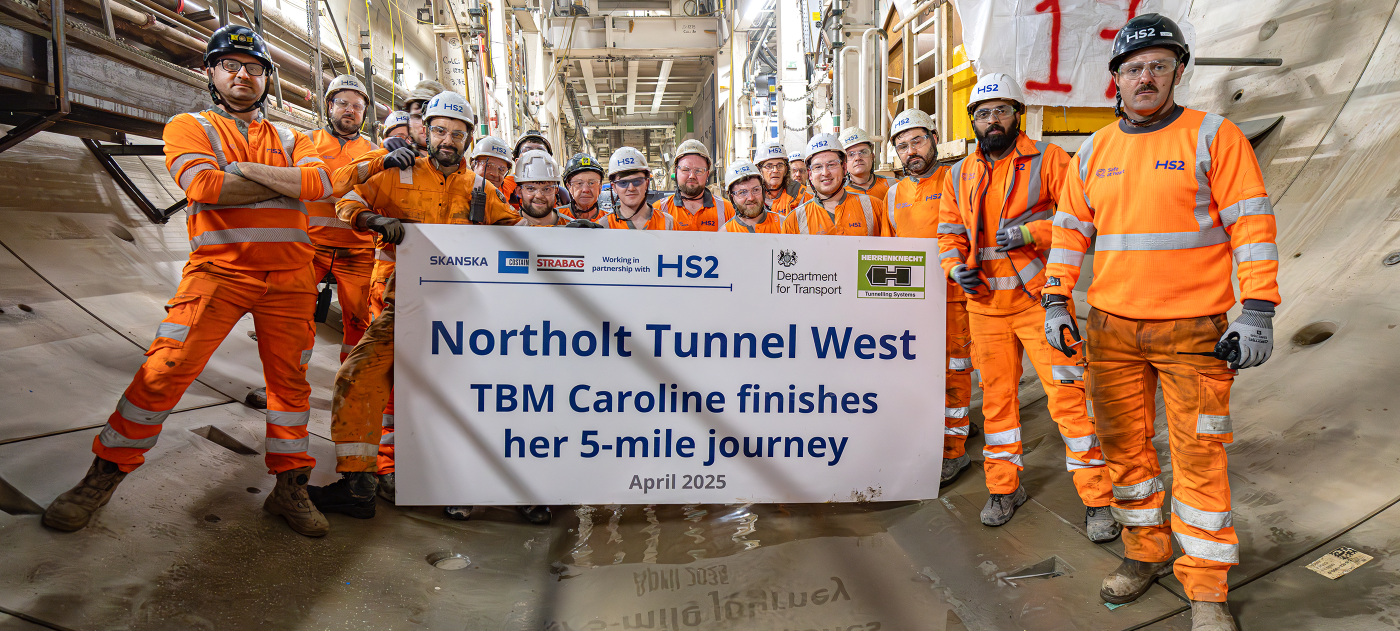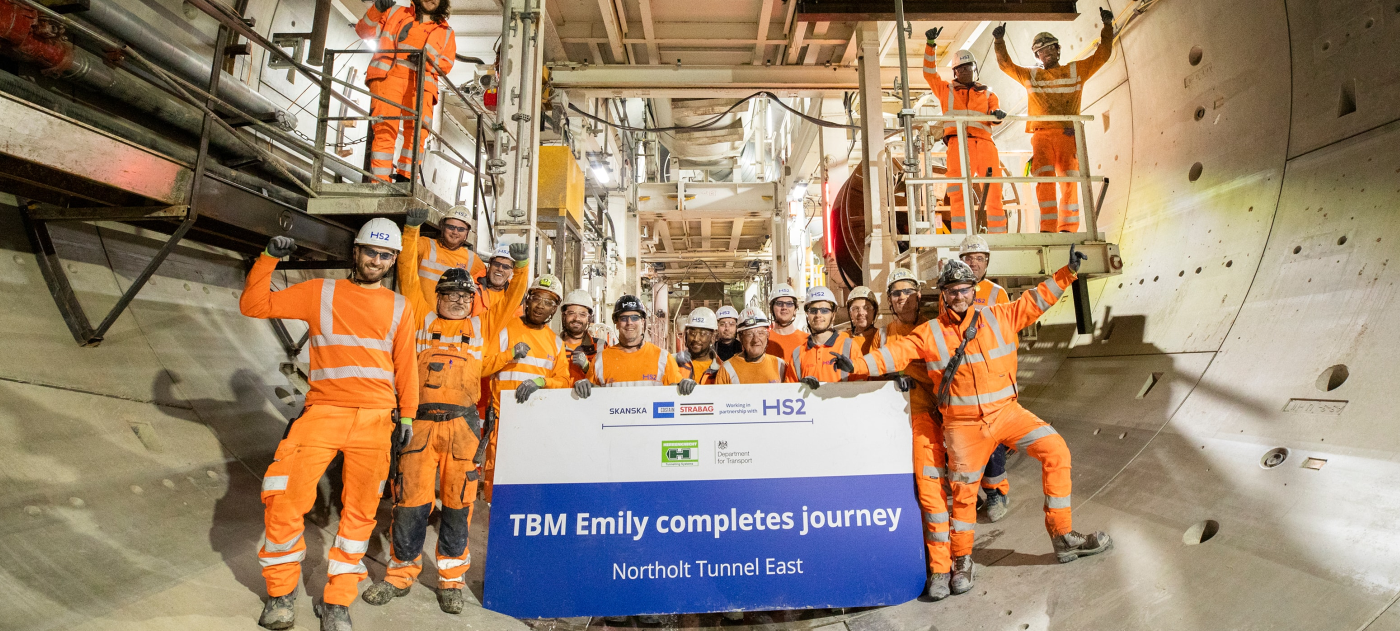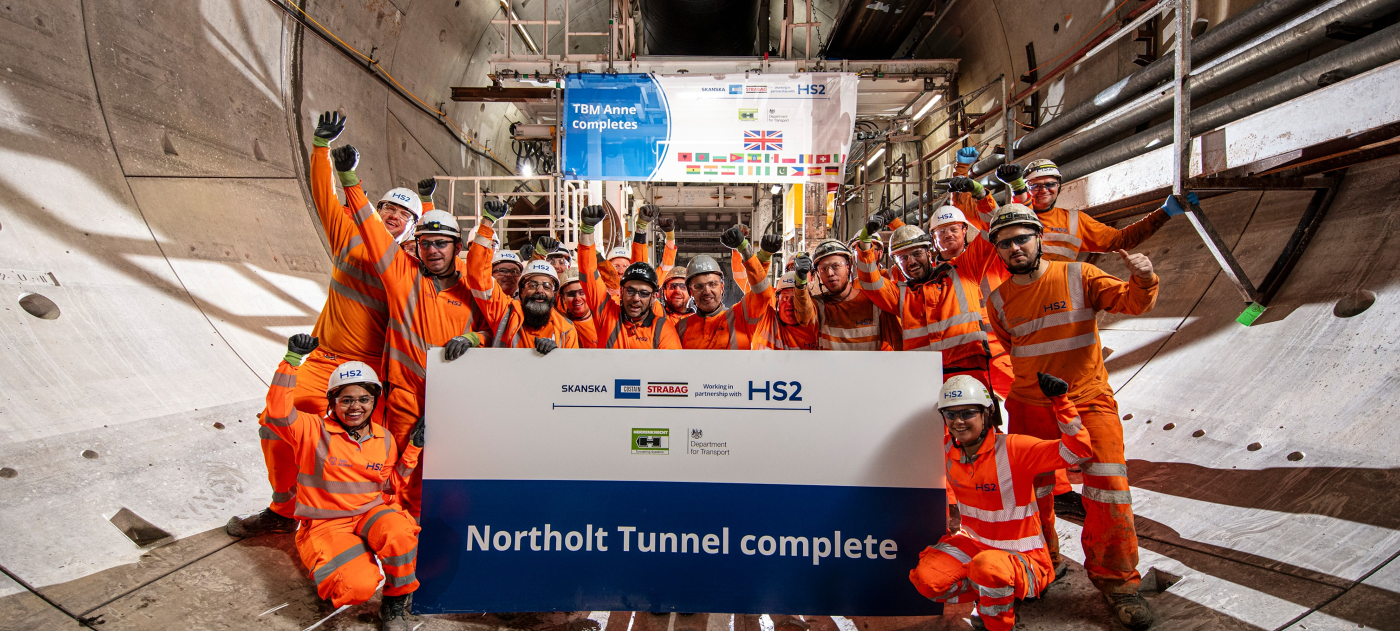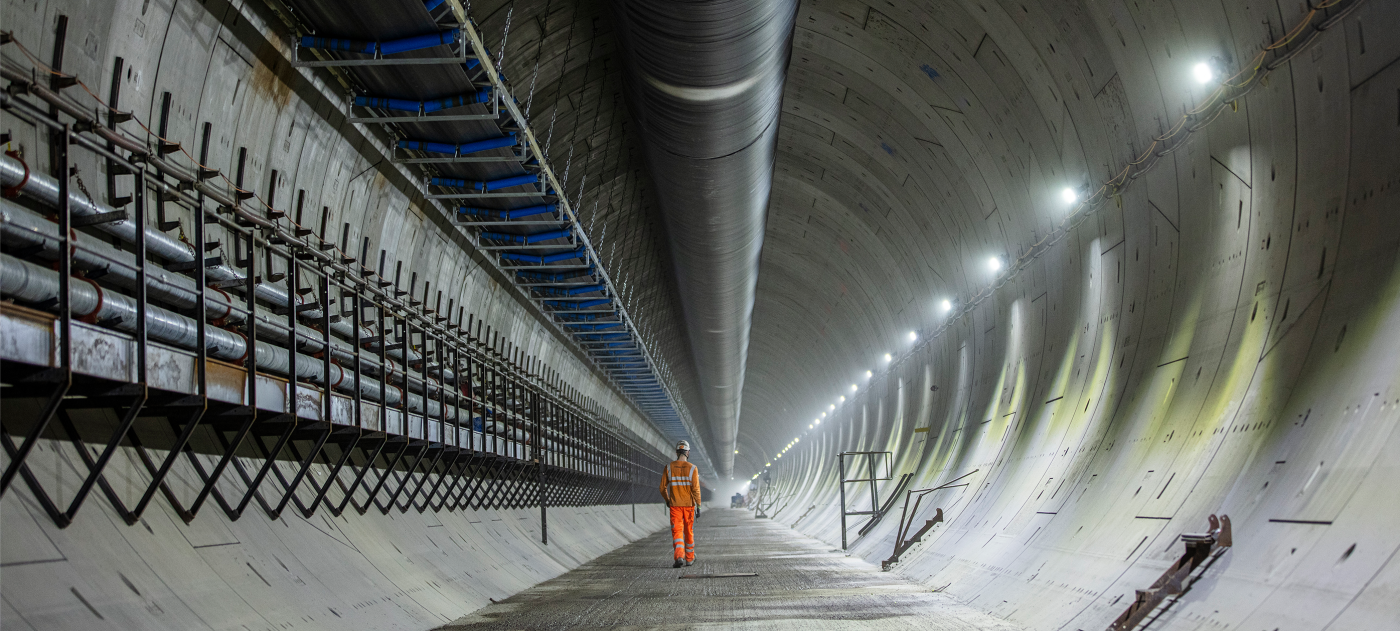
Northolt Tunnel
The Northolt Tunnel, the second longest on the HS2 route, stretches 8.4 miles (13.5km) beneath Hillingdon and Ealing. It will carry HS2’s new high-speed trains between West Ruislip, on the outer edge of the capital, and the new Old Oak Common super-hub station in west London. Four TBMs — Sushila, Caroline, Emily and Anne — were used to excavate the twin-bore tunnel. TBMs Sushila and Caroline completed their 5-mile (8km) western section in December 2024 and April 2025, followed by TBMs Emily and Anne, who finished the 3.4-mile (5.5km) eastern section in June 2025.
Tunnel construction
The enormous 1,700-tonne tunnel boring machines were built in a factory by world-leading German tunnelling specialists Herrenknecht. After completion, the machines were disassembled before beginning their long journey to England. On arrival at site, they were reassembled by the entrance to the tunnels, where a specially prepared head wall allowed them to safely begin their excavation.
Designed specifically for the geology of the London Clay, each machine is a self-contained underground factory—digging the tunnel, lining it with concrete wall segments, and grouting them into place as it moves forward. A crew of 17 operatives keep the machines running, working in shifts and supported by over 100 people at the main compound, managing logistics and maintaining the smooth progress of the tunnelling operation.
At peak, the TBM advanced at around 38 metres per day, with the crew ensuring the 9.11-metre diameter cutterhead cut through the earth, removed the clay, and supported the excavated tunnel with concrete segments—each weighing up to 7 tonnes.
The excavated London Clay was taken out of the tunnel using a conveyor system and, continuing along a horizontal conveyor, transported to HS2’s London Logistics Hub, where it was then taken away by rail for beneficial reuse across the UK.
In total, the four machines excavated 4,160,000 tonnes of London Clay and lined the tunnel with 14,300 concrete tunnel rings, made up of 94,233 precision-designed concrete segments. The tunnel segments used in the eastern section were made in Hartlepool by STRABAG, while those used in the western section were made in Kent by PACADAR UK. Both were transported to site by rail, minimising usage of London’s busy road network.
The internal width of the tunnel varies between the eastern and western sections—8.10m in the east and 8.80m in the west. The tunnels for HS2 are wider in sections where trains run faster, to accommodate aerodynamic requirements.
Discover our tunnels in London
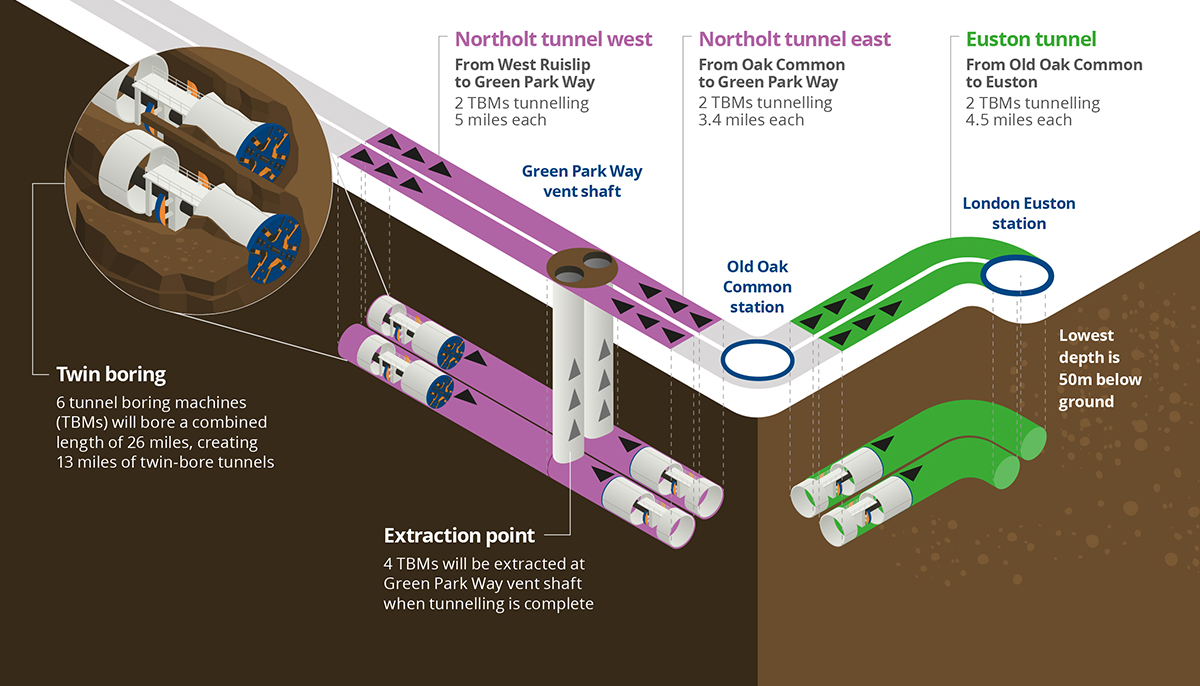
TBM reception chamber
All four machines finished their journey at Green Park Way, where they are to be lifted out from the underground shaft.
The TBMs will arrive in a specially designed reception chamber, or “can,” filled with foam concrete—an innovative solution developed to counter the site’s high groundwater pressure.
In a complex engineering operation, high water pressure at the Green Park Way site has meant that the TBMs are finishing their drives in steel reception cans installed within two underground shafts. This method allows the TBMs to maintain pressure while sealant is applied from the tunnel lining to prevent water ingress. Once sealed, the can is depressurised before being opened and the TBM lifted out.
Did you know...
Northolt Tunnel facts and figures
- Tunnel length: 8.4 miles (13.5km)
- Tunnel depth: 35m at its deepest
- Tunnel diameter: 8.10m in the east and 8.80m in the west
- No of tunnel cross passages: 34
- No of tunnel ventilation shafts: 5
- Tunnelling construction: 94,233 segments
- Tunnelling excavation: 4,160,000 tonnes (2.7 million m³) of London Clay
Northolt Tunnel - key construction milestones
Northolt Tunnel Ventilation Shaft & Headhouses
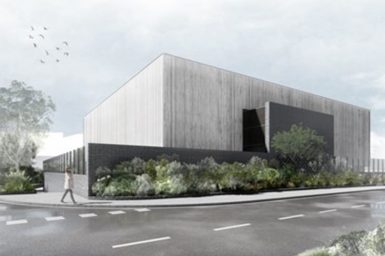
Victoria Road
A bold take on the local industrial style, mixing heritage with a fresh, modern feel to reflect the area’s past and future alike.
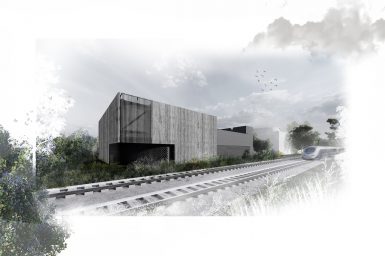
Westgate
A green roof and soft planting will help the design settle into its setting and support local wildlife as it grows over time.
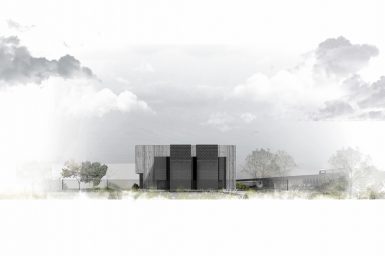
Green Park Way Headhouse
Set by the railway, the headhouse has been shaped to sit gently in its setting, with careful thought to views and form.

Mandeville Road Headhouse
Materials shift with place, from brick to metal to wood, echoing the changes in landscape from rural edges to urban centres.
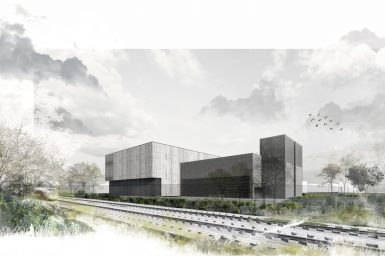
South Ruislip Headhouse
Part of the Green Corridor, it links new habitats, trees and shared spaces, helping nature and people thrive along the route.
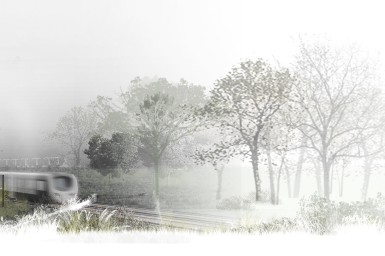
West Ruislip Portal
The West Ruislip Portal sits beside the Chiltern line, set within new habitat creation areas across West London.
